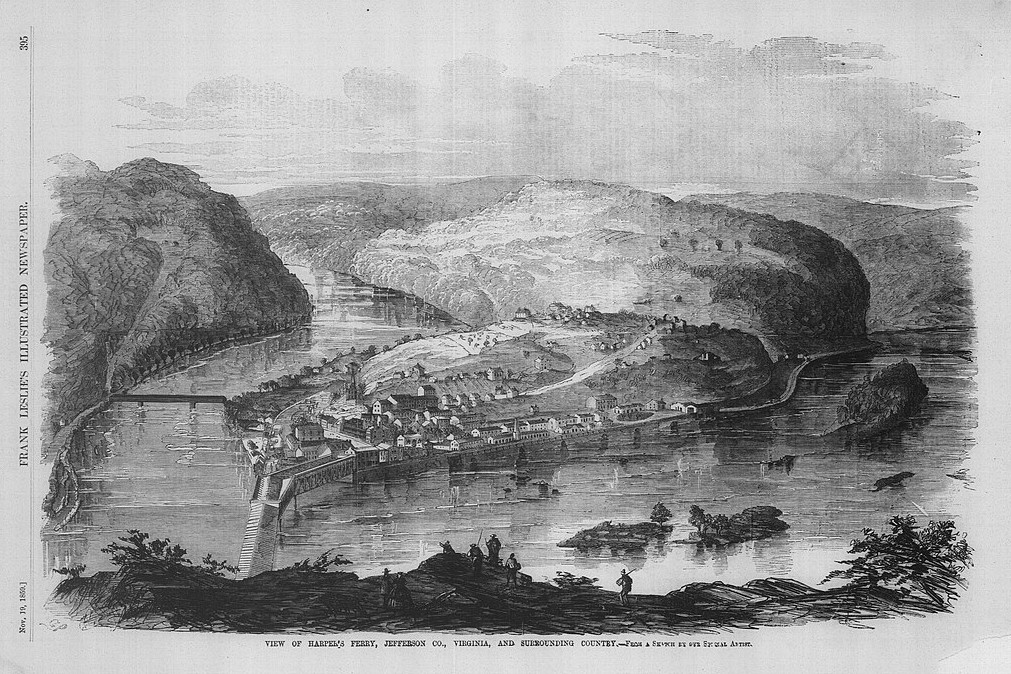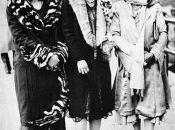The Harpers Ferry Raid, led by abolitionist John Brown, is one of the most significant events leading up to the American Civil War. In October 1859, Brown and a small group of followers, including free African Americans and former slaves, launched an audacious attack on the federal armory and arsenal located in Harpers Ferry, Virginia (now West Virginia).
Brown’s plan was to capture the armory and use its weapons to arm a slave uprising, believing that it would spark a rebellion against slavery across the South. However, the raid quickly turned into a bloody confrontation with local militia and federal troops. The raiders managed to seize control of the armory and several other key buildings in Harpers Ferry, but their efforts were ultimately thwarted by a contingent of U.S. Marines led by Colonel Robert E. Lee and Lieutenant J.E.B. Stuart. After a brief siege, Brown and his followers were captured, and several were killed, including two of Brown’s sons.
The Harpers Ferry Raid had far-reaching consequences, intensifying the national debate over slavery and galvanizing both abolitionists and pro-slavery forces. Brown’s actions were condemned by many in the South as an act of treason and terrorism, while abolitionists hailed him as a martyr and hero.
Brown’s raid and subsequent trial heightened tensions between North and South and played a significant role in the lead-up to the Civil War. Brown himself was convicted of treason and murder and was executed by hanging in December 1859. Despite its failure to incite a widespread slave rebellion, the Harpers Ferry Raid remains a symbol of the fervent abolitionist movement and the deep divisions that ultimately led to the Civil War.

Harpers Ferry in 1859
To know more about The Harpers Ferry Raid, let’s take a look at these 15 interesting facts about Harpers Ferry Raid.
- John Brown’s Strategy: John Brown’s plan for the raid on Harpers Ferry involved seizing the federal arsenal to arm enslaved people and spark a widespread rebellion against slavery.
- Small Band of Followers: Brown’s raiding party consisted of only 21 men, including five black men, three of whom were free and two who were former slaves.
- Armory Target: The raid focused on the Harpers Ferry Armory and Arsenal, where Brown hoped to capture thousands of weapons and ammunition to arm enslaved people.
- Symbolic Timing: Brown chose to launch the raid on October 16, 1859, deliberately selecting the anniversary of the Battle of Bunker Hill, a pivotal event in the American Revolutionary War.
- Missed Communication: Brown had initially planned to coordinate his raid with a slave uprising in nearby Maryland, but communication failures prevented the two actions from coinciding.
- Unexpected Resistance: Although Brown and his men easily captured the armory, they encountered unexpected resistance from local citizens and militia, leading to a standoff.
- Intervention by Federal Troops: Federal troops, led by then-Lieutenant Colonel Robert E. Lee and his aide J.E.B. Stuart, were dispatched to Harpers Ferry to quell the uprising and capture Brown and his followers.
- Siege and Surrender: After a brief siege, Brown and his remaining followers were forced to surrender to the overwhelming force of federal troops.
- Deaths and Casualties: The raid resulted in the deaths of several people, including some of Brown’s followers and innocent bystanders. Brown himself was wounded and eventually captured.
- Trial and Execution: Brown was quickly tried for treason, murder, and inciting slave rebellion. He was found guilty and was executed by hanging on December 2, 1859.
- Impact on National Debate: The Harpers Ferry Raid intensified the national debate over slavery, with abolitionists praising Brown as a martyr and hero, while many in the South condemned him as a terrorist and traitor.
- Role in Prelude to Civil War: The raid heightened tensions between North and South and played a significant role in the lead-up to the Civil War, further polarizing the nation over the issue of slavery.
- Impact on Abolitionist Movement: Although the raid itself failed to incite a widespread slave rebellion, it galvanized the abolitionist movement and inspired many to join the cause against slavery.
- Memory and Legacy: The memory of the Harpers Ferry Raid continues to evoke strong emotions and interpretations, with some viewing Brown as a radical extremist and others as a courageous freedom fighter.
- Historical Interpretations: Historians continue to debate the significance and legacy of the raid, with interpretations varying based on political, cultural, and ideological perspectives.
The Harpers Ferry Raid stands as a pivotal moment in American history, encapsulating the intense divisions over the issue of slavery that ultimately led to the Civil War. John Brown’s audacious attempt to seize the federal armory and spark a slave rebellion ignited fierce debate and condemnation in the South, while inspiring admiration and support among abolitionists in the North. Despite its failure to achieve its intended goals, the raid profoundly influenced the trajectory of the nation, intensifying sectional tensions and accelerating the march towards war. The memory of the Harpers Ferry Raid continues to provoke reflection and debate, serving as a poignant reminder of the enduring struggle for freedom and justice in American society.





